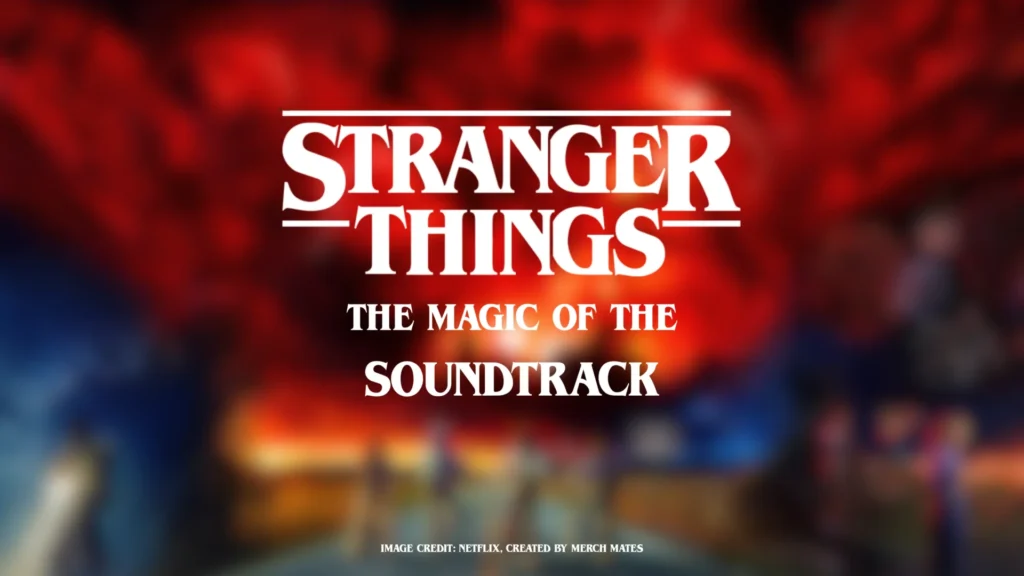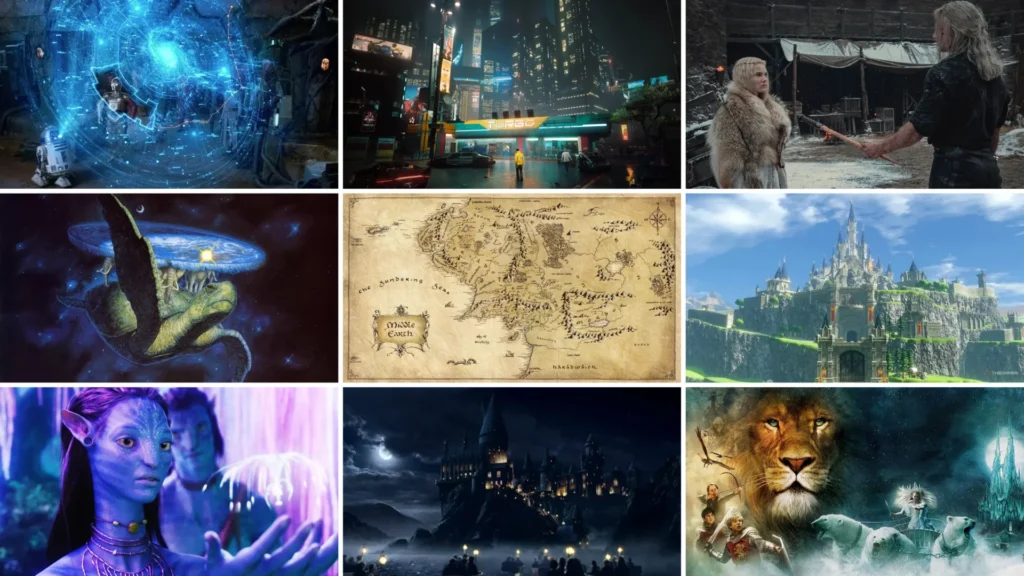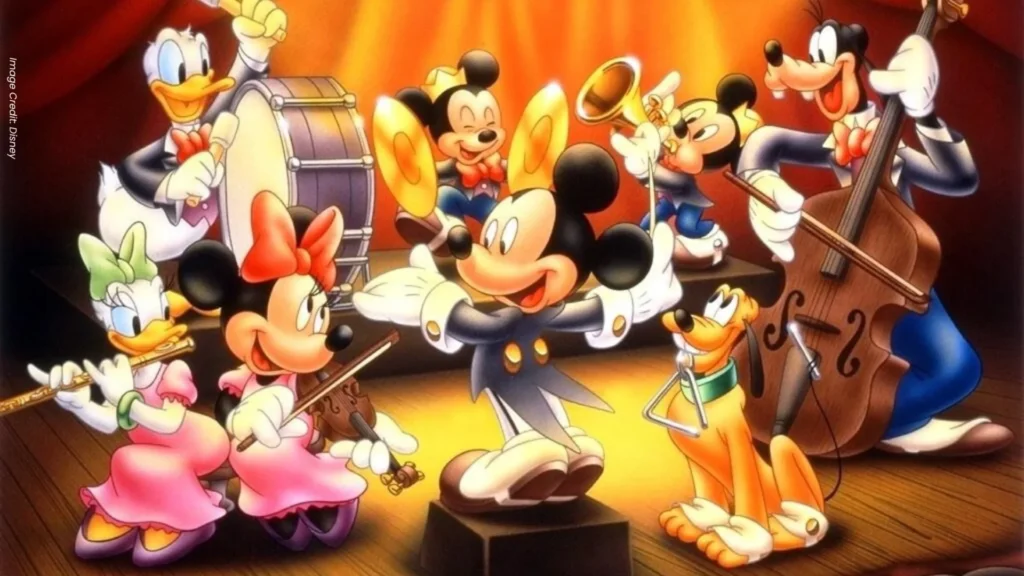Physiologist and author Laurie Helgoe once observed that reading is like travel, allowing you to exit your own life for a bit and return with a renewed, even inspired perspective. The greatest fictional worlds take this idea to its logical conclusion, offering not just a temporary escape but a complete, alternate reality. These are not merely backdrops for a story; they are characters in their own right, with histories, cultures, politics, and physics that shape every event that unfolds within them. The best fantasy settings feel less like they were designed and more like they were discovered, waiting for us to explore their deepest corners.
The universes on this list span the foundational pillars of literature, the sprawling landscapes of modern video games, and the unforgettable realms of cinema and television. This is a celebration of worldbuilding in fiction at its most ambitious and brilliant.
20. Pandora
Avatar
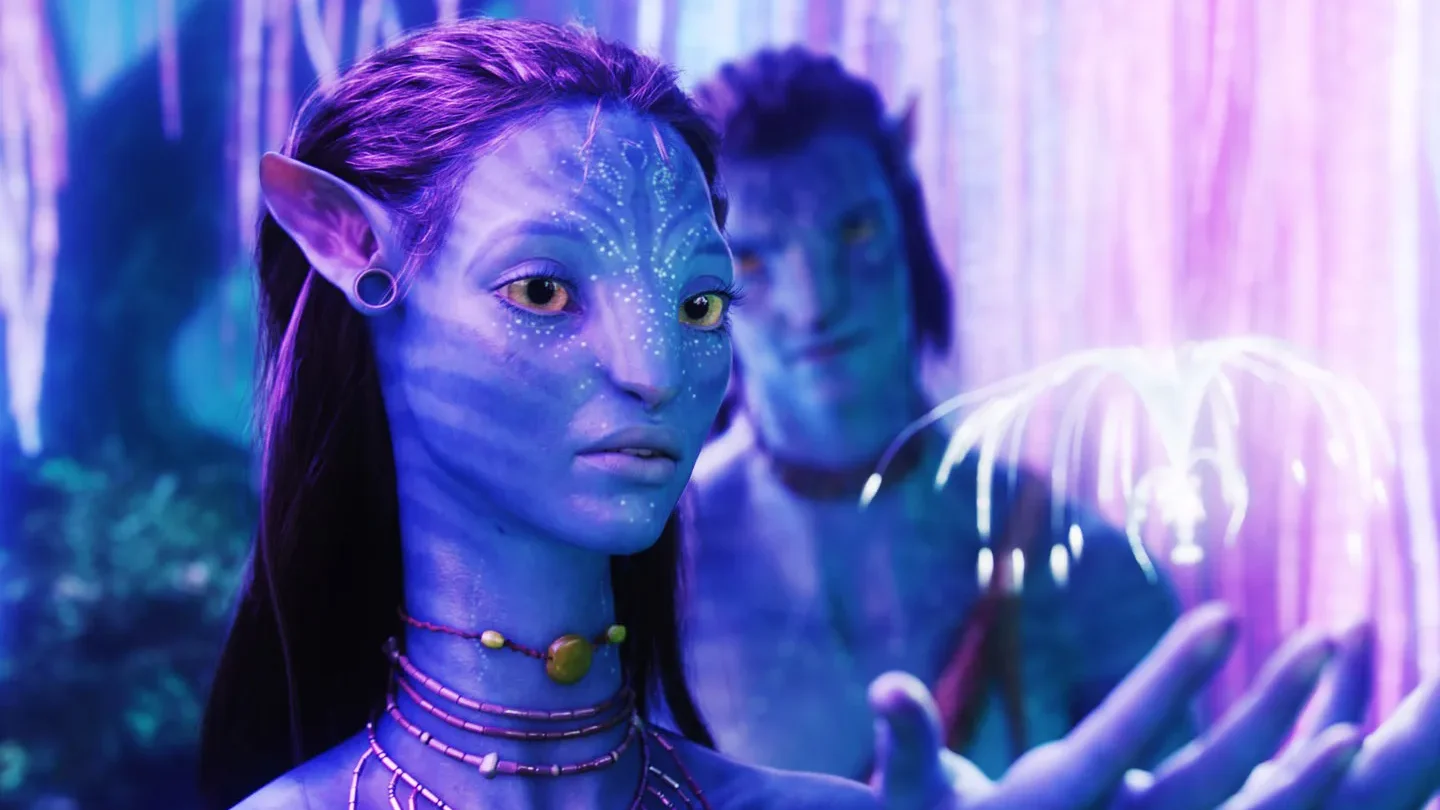
James Cameron’s Pandora is a masterclass in visual worldbuilding, a world designed to inspire awe through its sheer spectacle. When audiences first witnessed this bioluminescent alien moon in 2009, they encountered an ecosystem where every element felt interconnected and alive. The flora and fauna of Pandora are as dangerous as they are beautiful, from the floating Hallelujah Mountains to the bioluminescent forests that glow with an otherworldly radiance at night. The Na’vi, with their deep spiritual connection to Eywa and the neural networks that bind all living things, represent a civilisation in perfect harmony with their environment.
What makes Pandora truly remarkable is how Cameron’s team made an utterly alien planet feel like a real, tangible place worth fighting for. The world’s power lies not in dense lore or complex political systems, but in its immediate, visceral impact. Every frame is packed with detail, from the way light filters through the canopy to the intricate designs of the creatures that inhabit this moon. Pandora set a new benchmark for cinematic immersion in fiction, proving that a picture – or in this case, a moving, three-dimensional one – can be worth a thousand pages of lore. This visual feast established a high bar for spectacle, but our next entry explores a different kind of immersion: one of societal decay and neon-soaked desperation.
19. Night City
Cyberpunk 2077

A concrete and chrome jungle drenched in neon and acid rain, Night City is the defining vision of the cyberpunk genre brought to interactive life. This sprawling metropolis on the California coast is a world of stark contrasts, where cybernetically enhanced mercenaries navigate a society run by monolithic corporations and plagued by systemic decay. The city itself feels alive, a character defined by its towering skyscrapers, sprawling districts, and the desperate lives of its inhabitants. From the corporate luxury of the City Centre to the gang-controlled chaos of Pacifica, each district tells its own story of inequality and survival.
Night City’s compelling atmosphere of high-tech glamour and low-life struggle makes it a powerful and cautionary vision of the future. The world is one where body modification is commonplace, where your humanity is measured in percentages as you replace flesh with chrome, and where the line between human and machine grows ever thinner. CD Projekt Red’s meticulous attention to detail brings every alleyway, ripperdoc clinic, and megabuilding to life with a density that rewards exploration. The city’s vertical architecture, with its multiple levels of society literally stacked atop one another, serves as a perfect metaphor for its brutal class divisions. This bleak vision of tomorrow, where technology has advanced but humanity has regressed, stands in sharp contrast to the whimsical magic of a classic fairytale land.
18. Oz
The Wizard of Oz
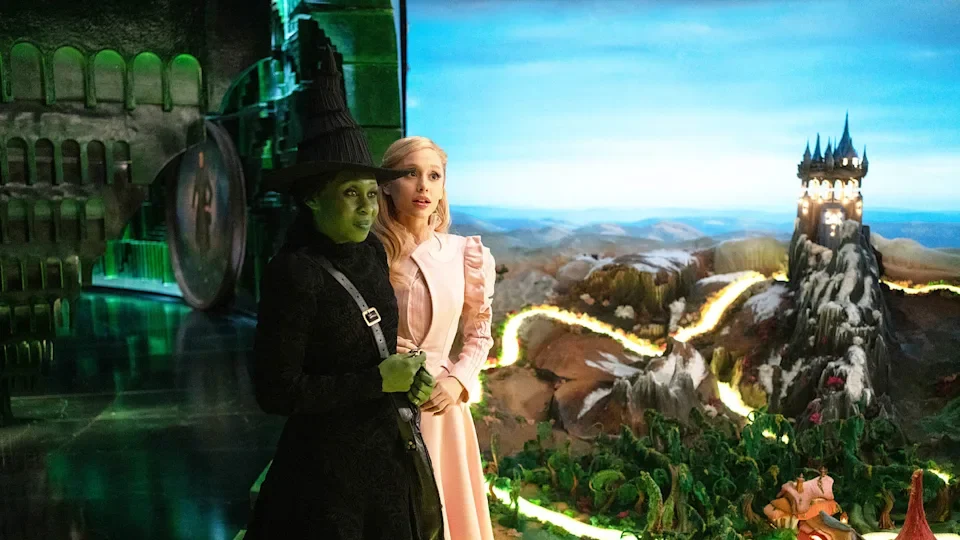
Located somewhere over the rainbow, Oz is a land of fairytales and folklore where witches, munchkins, and anthropomorphic animals rub shoulders in a world of pure imagination. L. Frank Baum created a realm with a surreal, magical quality that feels more akin to European folklore than to modern epics, and the 1939 film adaptation transformed it into one of cinema’s most enduring fantasies. Through it all runs the Yellow Brick Road that leads to the Emerald City, a journey that has become synonymous with adventure itself.
In an era dominated by dark fantasy and gritty realism, the land of Oz remains a refreshing and enchanting counterpoint. Its charm lies in its whimsical simplicity and iconic locations, from the Munchkin village to the Emerald City, from the dark forest where the Wicked Witch’s flying monkeys patrol to the poppy fields that threaten to lull travellers into eternal sleep. The world’s inhabitants, the Scarecrow seeking a brain, the Tin Man longing for a heart, the Cowardly Lion searching for courage all embody universal human desires in fantastical forms. As one of the most-watched movies in history, its colourful, quirky setting has become a cultural touchstone, proving that a fantasy world doesn’t need grim realism to be timeless. The moment Dorothy steps from sepia-toned Kansas into Technicolor Oz remains one of cinema’s most magical transitions, a visual representation of fantasy’s power to transform the mundane into the marvellous. From this land of wonder, we travel back to a time of primal danger and savage glory.
17. Hyboria
Conan the Barbarian
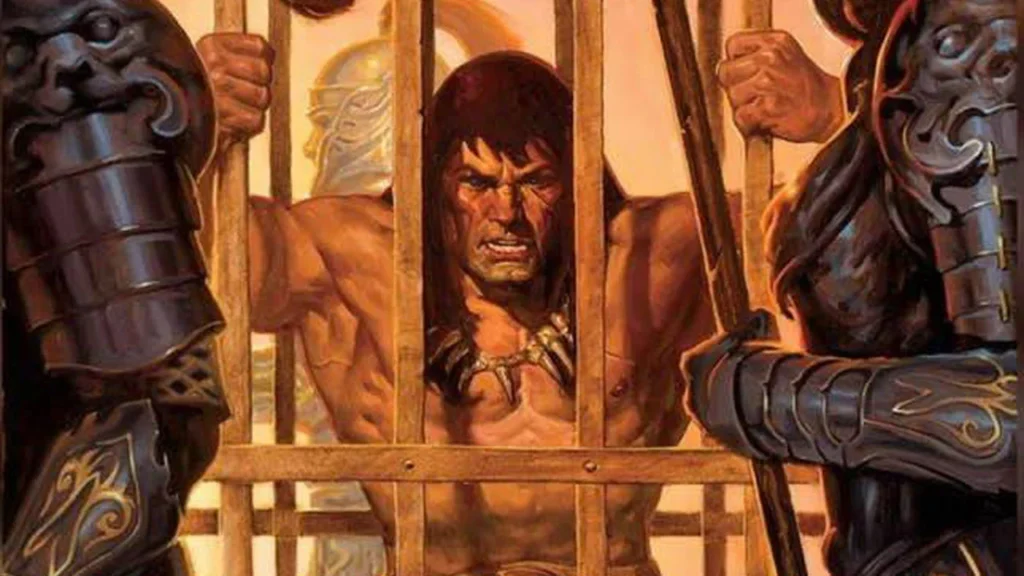
If J.R.R. Tolkien is the father of modern fantasy, then Robert E. Howard is the grandfather, and Hyboria is his primal blueprint for the sword and sorcery genre. Set in a supposed distant past of our own world, during an age undreamed of between the sinking of Atlantis and the rise of recorded history, Hyboria is a savage land of fearsome monsters, lost treasures, and sorcerers wielding powers they can barely control. This is a world where civilisation is a thin veneer over barbarism, where ancient evils lurk in forgotten ruins, and where a man’s worth is measured by the strength of his sword arm.
Unlike the civilised dangers of many modern fantasy worlds, Hyboria’s threats are simpler and more immediate: the sharp edge of a raider’s sword, the claws of a nightmarish beast, or the dark sorcery of a power-mad wizard. Howard’s world is one of constant motion, where Conan himself wanders from the frozen wastes of Nordheim to the decadent cities of the south, from the mysterious jungles of the Black Kingdoms to the Eastern deserts. The various kingdoms, Aquilonia, Stygia, Zamora, and others each possess distinct cultures and dangers, but all share a sense of lurking menace and ancient mystery. This world established the archetype of the wandering barbarian hero and remains a powerful example of a raw, untamed setting where survival depends on strength, cunning, and an indomitable will. Hyboria’s raw power established a genre, but our next entry redefines epic scale not on one world, but across an entire galaxy of interconnected ones.
16. The Cosmere
The Stormlight Archive, Mistborn
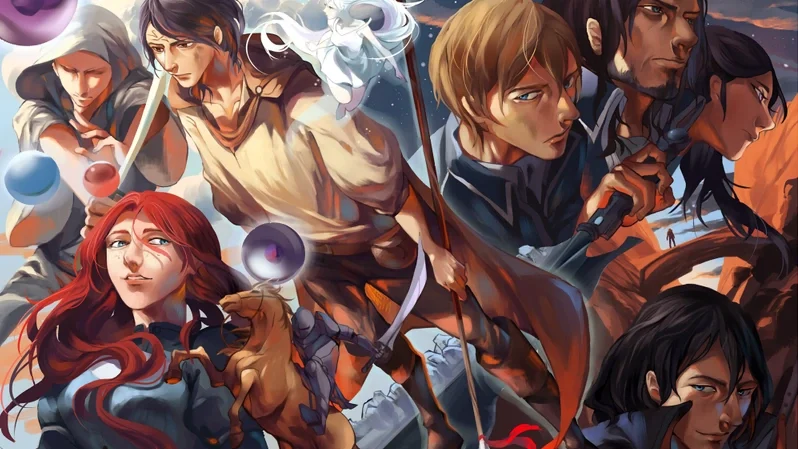
Brandon Sanderson’s Cosmere is less a single world and more a grand, interconnected universe of staggering ambition. Comprising multiple planets, each with its own unique and meticulously crafted magic system, the Cosmere is an exercise in long-form worldbuilding that may not reach its conclusion for decades.
What elevates the Cosmere beyond the sum of its parts is the overarching narrative that slowly intertwines these seemingly separate worlds. Mysterious figures called Worldhoppers appear across different planets, hinting at deeper connections. The Shards of Adonalsium, god-like beings that shape the magic and destiny of each world, provide a unifying cosmology that rewards careful readers who piece together the clues scattered across multiple series. Sanderson’s approach to magic treats it as a science with consistent rules and limitation, giving each world a unique flavour whilst maintaining internal logic. Though still unfolding, the Cosmere’s potential to become one of the top fantasy universes ranked is undeniable, representing the future of epic fantasy and demonstrating how a single author’s vision can span an entire literary universe. Its intricate systems and careful planning stand in stark contrast to the sheer, glorious chaos of our next world.
15. Warhammer 40,000
Warhammer 40,000
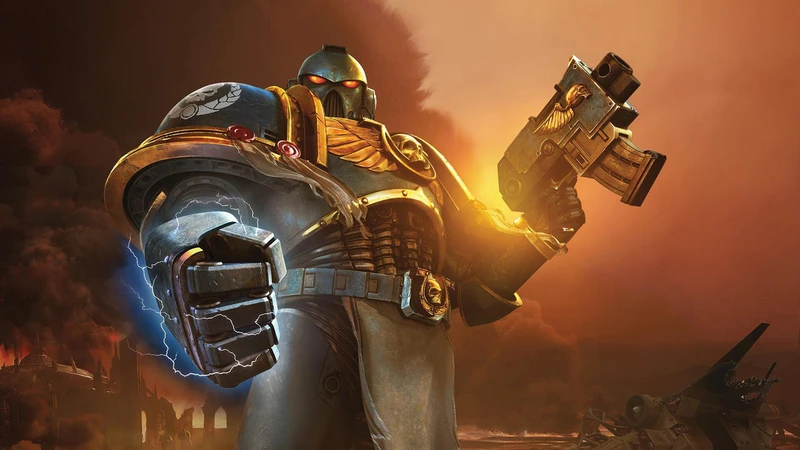
The 41st Millennium is, quite simply, the most badass, over-the-top universe ever created. This is a unique and wonderfully absurd blend of science fiction and high fantasy taken to its absolute extreme, where genetically engineered space marines in power armour battle cosmic orcs and space elves whilst sorcerers summon demons from a realm of pure chaos. It is a setting defined by its maximalist scale and grim themes, where humanity clings to survival in a galaxy of endless war, worshipping a corpse-emperor who sits immobile on a golden throne, sustained by the daily sacrifice of a thousand souls.
In the grim darkness of the far future, there is only war and that’s precisely what makes Warhammer 40,000 so compelling. The Imperium of Man is a fascistic theocracy spanning a million worlds, constantly besieged by threats from without and within. Chaos Gods feed on emotion and corruption, alien Tyranids devour entire planets, the ancient Necrons awaken from aeons of slumber, and the Orks wage war simply because they find it fun. The world’s aesthetic is deliberately excessive, with cathedral-like spaceships the size of cities, weapons that can crack planets, and battles involving billions of soldiers. Yet beneath the bombast lies surprisingly rich and often satirical lore that comments on authoritarianism, religious extremism, and the futility of endless conflict. Its influence on tabletop gaming and science fiction is immeasurable, creating a universe where the only appropriate response is “more dakka.” From this maximalist universe, we turn to the very foundation of collaborative storytelling.
14. Dungeons & Dragons Multiverse
Dungeons & Dragons
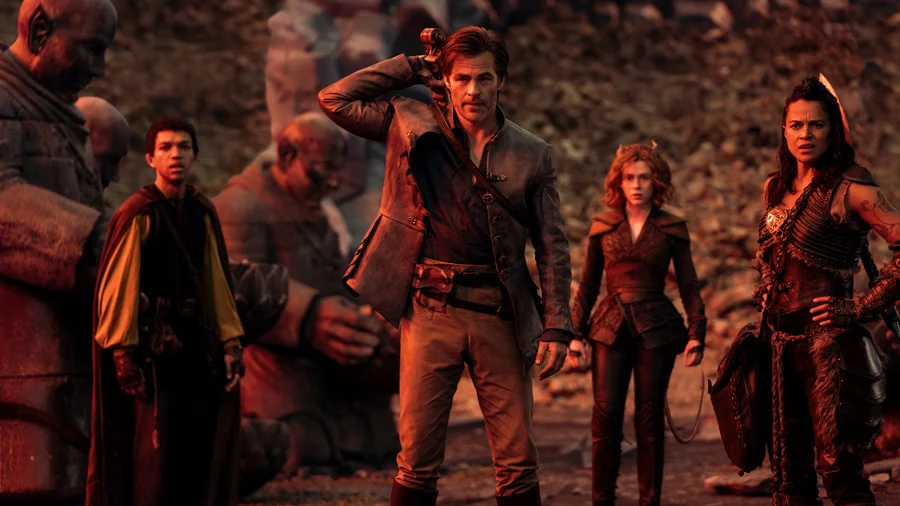
As the progenitor of the tabletop RPG genre, the D&D multiverse is less a single world and more a toolkit for infinite stories. Since creating the tabletop RPG genre in the 1970s, Dungeons & Dragons has been host to countless adventures and stories across multiple campaign settings. The classic high-fantasy Forgotten Realms, with its Sword Coast and the city of Waterdeep, provides a traditional backdrop for heroic adventures. Eberron offers a world where magic has been industrialised, with magically powered trains and warforged robots. Dark Sun presents a dying desert world where magic drains life itself. Planescape explores the infinite planes of existence, from the Nine Hells to Mount Celestia.
The true power of the D&D multiverse lies in its variety, offering Dungeon Masters a rich tapestry of lore, creatures, and magic to build their own unique campaigns. If variety is the spice of life, then D&D is certainly a savoury dish. The game’s influence is immeasurable, providing the foundational DNA for countless other top fantasy universes ranked across books, films, and games. Concepts like alignment systems, character classes, and dungeon crawling have become so ubiquitous that their origins in D&D are often forgotten. The multiverse’s flexibility means it can accommodate any style of play, from high fantasy heroics to gritty survival horror, from political intrigue to comedic misadventures. It’s a world – or rather, infinite worlds – that belongs as much to the players as to its creators, a collaborative space where imagination is the only limit. Another world born from tabletop gaming offers a much stranger vision.
13. Discworld
Discworld
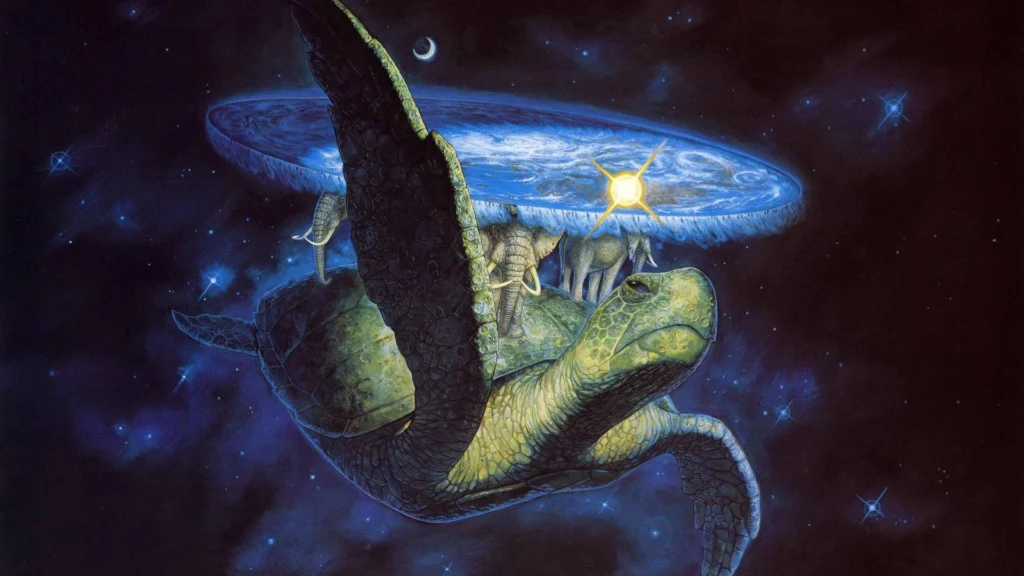
At first glance, Discworld appears to be a work of pure absurdity: a flat disc-shaped world supported by four giant elephants which stand on the back of the enormous turtle Great A’Tuin, who swims through space. Yet beneath its bizarre premise lies one of the most brilliant and detailed satirical universes ever conceived. Terry Pratchett wrote over 40 novels set in this world, using its fantastic setting to comment on very real human follies with wit and wisdom. From the bustling city-state of Ankh-Morpork – where the Thieves’ Guild is licensed and the Assassins’ Guild offers educational scholarships – to the witch-haunted mountains of Lancre, Discworld is a masterwork of satirical worldbuilding.
Despite its fantastical nature, Discworld is deeply coherent, with its own consistent rules of magic, diverse cultures, and a massive cast of memorable characters. The wizards of Unseen University study magic with academic rigour whilst avoiding actually using it whenever possible. The witches of the Ramtops practice “headology,” understanding that what people believe is often more powerful than magic itself. Death himself is a recurring character, a seven-foot skeleton with a fondness for cats and curry who speaks in capital letters. Pratchett used this absurd world to explore everything from the nature of belief to the mechanics of storytelling itself, from the dangers of fundamentalism to the importance of a good copper on the beat. It is a world that is as thought-provoking as it is hilarious, proving that fantasy can be both deeply silly and profoundly serious. Our journey now leads us to a world where the elements themselves are weapons.
12. Earth
Avatar: The Last Airbender
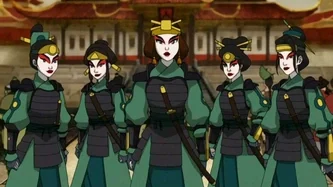
The world of Avatar: The Last Airbender is a stunning achievement in animated worldbuilding, blending Asiatic-inspired cultures with a unique and visually spectacular magic system known as “bending.” The principal fantasy element is the presence of benders who can telekinetically manipulate the elements – water, earth, fire, or air—with each bending style reflecting the philosophy and martial arts traditions of its respective nation. The Four Nations – Water Tribes, Earth Kingdom, Fire Nation, and Air Nomads – each possess a distinct identity reflected in their architecture, philosophy, and way of life, from the ice-sculpted cities of the poles to the sprawling metropolis of Ba Sing Se.
The world is further enriched by its connection to a vibrant Spirit World, whose inhabitants range from benevolent to malevolent, and which becomes increasingly integrated with the human realm in the sequel series The Legend of Korra. The Avatar, capable of mastering all four elements, serves as the bridge between these worlds and the keeper of balance. Perhaps most memorably, the world is populated by charmingly bizarre chimerical animals – flying bison, polar bear dogs, platypus bears, and turtle ducks – that add whimsy without undermining the world’s internal logic. The thoughtful construction and cultural depth make it one of the most beloved and original settings in modern animation, a world where Eastern philosophy and spectacular action sequences combine to create something truly special. From this harmonious world, we delve into one of overwhelming complexity.
11. Malazan Empire
Malazan Book of the Fallen
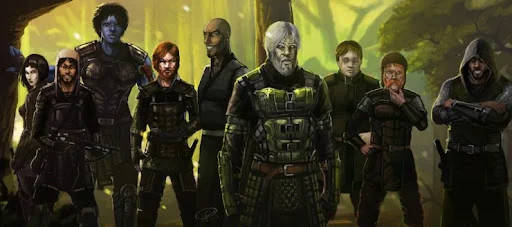
The Malazan world is legendary among fantasy readers for its staggering depth and complexity, a reputation that serves as both invitation and warning. Born from a pen-and-paper RPG setting created by authors Steven Erikson and Ian Esslemont, it boasts a history spanning hundreds of thousands of years, multiple continents, and countless races, empires, and gods. This is a world where gods walk among mortals, where ancient races like the T’lan Imass – undead warriors who sacrificed their humanity in a ritual millennia ago – wage eternal wars, and where the Crippled God’s influence corrupts entire civilisations.
What makes Malazan truly unique is how Erikson and Esslemont throw readers directly into this dense, ancient world, offering no easy explanations or convenient exposition. You must piece together the history, the magic systems, the political machinations, and the cosmic conflicts from context and scattered clues. The Warrens – paths through other dimensions that mages use to access power – operate on rules that are gradually revealed. The various continents, from Genabackis to Seven Cities, each have their own cultures, conflicts, and cast of characters numbering in the hundreds. While potentially overwhelming, the sheer scale and the feeling that you are experiencing a living, breathing history firsthand make it a monumental achievement in worldbuilding for those willing to take the plunge. We now move to a world that is similarly dense but more grounded in gritty folklore.
10. The Continent
The Witcher

Grounded in Slavic folklore and dark fairy tales, the world of The Witcher is a gritty, morally ambiguous landscape where stark realism clashes with magic and monsters. Andrzej Sapkowski’s several early Witcher stories offer dark takes on popular fairy tales, replacing traditional tropes with moral complexity, and this tone colours the entire series. The Continent is a dangerous, often brutal world where creatures inspired by Slavic folklore – striga, leshens, vodyanoi – lurk in the woods, where people can be just as monstrous as the beasts, and where Elder Races like elves and dwarves struggle to survive human expansion and persecution.
This focus on moral ambiguity and the brutal realities of survival gives The Continent a grounded tone that sets it apart from more traditional high fantasy. Geralt of Rivia, the witcher himself, navigates a world where the line between monster and human is often blurred, where the “lesser evil” is still evil, and where neutrality is a luxury few can afford. The various kingdoms – Nilfgaard, Redania, Temeria – engage in brutal wars where common folk suffer regardless of who wins. Magic exists but is feared and persecuted, with sorceresses and sorcerers forming their own political factions.
CD Projekt Red’s video game adaptations and Netflix’s television series have brought this world to life for new audiences, but its danger feels visceral and immediate across all media, a place where survival depends on silver swords, careful preparation, and knowing when to walk away from a fight.
9. Hyrule
The Legend of Zelda

You don’t always need to pack in a plethora of kingdoms to make a great fantasy world. Sometimes, you just need one. The Kingdom of Hyrule is one of the most iconic settings in video game history, a realm that has been revisited, reimagined, and rebuilt across dozens of games spanning nearly four decades. Distinguished by its natural beauty, Hyrule encompasses deep woods, towering peaks, vast desert regions, and serene lakes, each area teeming with secrets and dangers. Ruled by the Royal Family from Hyrule Castle and watched over by the Golden Goddesses – Din, Nayru, and Farore – it has a long and detailed history filled with ancient conflicts, calamities, and magical artefacts.
A variety of unique races populate Hyrule’s diverse geographical regions, including the rock-eating Gorons of Death Mountain, the aquatic Zora, the diminutive Fairies, the desert-dwelling Gerudo, and the bird-like Rito. The Triforce, a sacred relic representing power, wisdom, and courage, sits at the heart of Hyrule’s mythology, with the eternal conflict between Link, Zelda, and Ganon playing out across multiple timelines and eras. What makes Hyrule truly special is how it demonstrates that a well-realised world can be endlessly reimagined while retaining its core identity. From the top-down perspective of the original game to the vast open world of Breath of the Wild and Tears of the Kingdom, Hyrule has been incredibly influential, showing how some places can be so special that revisiting them never gets old. From one iconic kingdom, we expand to a world defined by global conflict.
8. Azeroth
Warcraft
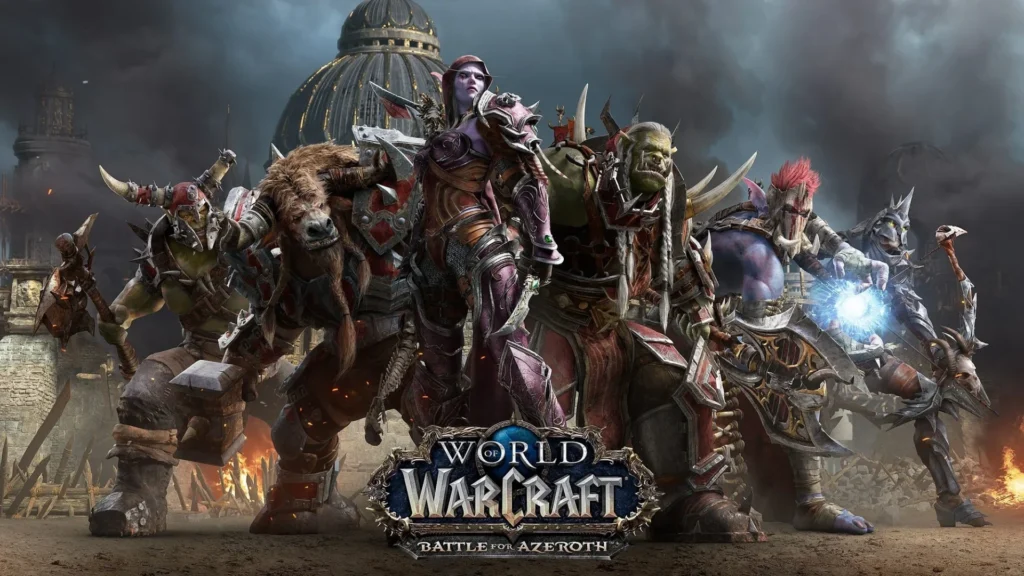
Azeroth has evolved dramatically from its origins as a simple backdrop for a real-time strategy game into a sprawling, living universe rich with elaborate mythology. With the launch of World of Warcraft in 2004, Blizzard transformed their world into something players could inhabit, and with each expansion, the world has been expanded, revealing new continents and kingdoms. Defined by the central conflict between the human-led Alliance and the Orcish Horde, Azeroth is a vast world with an ever-expanding map that now encompasses multiple continents, from the Eastern Kingdoms to Kalimdor, from the frozen wastes of Northrend to the alien world of Draenor.
Its many regions are populated by the usual humans, elves, dwarves, and orcs, but Blizzard has given this world just enough unique flavour with its distinct races and epic history to make it stand out. The Tauren, inspired by Native American cultures, roam the plains of Mulgore. The Pandaren, anthropomorphic pandas, bring Eastern philosophy and martial arts to the world. The Draenei, refugees from a destroyed world, add a science-fiction element with their crystalline technology. What truly elevates Azeroth is its fascinating cosmology: the world itself is home to the world-soul of a titan, and was once a battleground where titans warred with the Old Gods—eldritch horrors that remain imprisoned beneath the surface, their whispers still corrupting the unwary. This blend of high fantasy, cosmic horror, and epic history creates a world that offers endless possibilities for adventure. From this digital realm, we step through a wardrobe into a classic.
7. Narnia
The Chronicles of Narnia
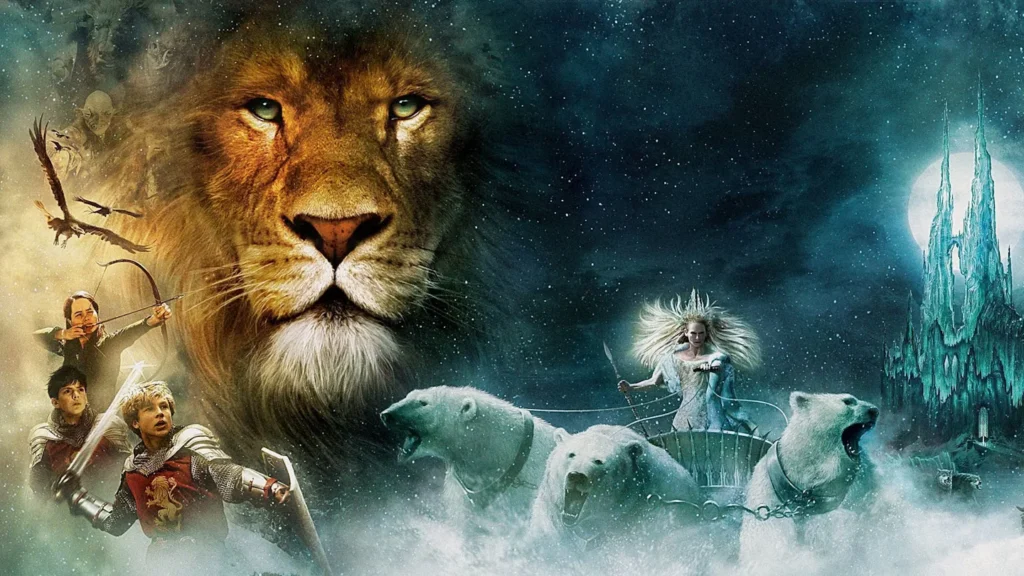
C.S. Lewis’s Narnia is the quintessential “portal fantasy,” a world that exists parallel to our own, accessible through the most mundane of means—a wardrobe, a painting, a railway accident. Written in the 1950s, the Narnia series exemplifies a subgenre whose charm often lies in the juxtaposition between the mundane and the fantastic, and this is where the magic of Narnia lies. In Narnia, animals can talk, and ordinary school children can become kings and queens and make friends with mythical beasts. The land itself is steeped in a deep, faith-inspired mythology that gives it a unique and charming quality, with Aslan the lion serving as a Christ-like figure who created the world with his song.
Its enduring magic lies in this very juxtaposition, where ordinary children are thrust into a realm of talking animals, mythical beasts, and epic struggles between good and evil. The world captures the childlike wonder at the heart of fantasy, a place where a lamppost in the snow can signify the beginning of an unforgettable adventure. While the film adaptations weren’t all well-received, the world they revealed remained enchanting, from the frozen beauty of Narnia under the White Witch’s hundred-year winter to the golden age of the Pevensie children’s reign at Cair Paravel. Every time we see a lamppost, we hope we’ve stumbled into Narnia somehow, that magical realm where courage, loyalty, and faith can overcome any darkness. We now turn to a world where time itself is a central character.
6. Randland
The Wheel of Time

The world of The Wheel of Time, often called Randland by fans, is a masterwork of detail and scale that Robert Jordan crafted over fourteen massive volumes. As the series’ title implies, time is a cycle in this world, and there are seven ages repeating with different variations each time. The Wheel of Time turns, and Ages come and pass, leaving memories that become legend, then fade to myth, and are long forgotten when that Age comes again. Jordan crafted a world with thousands of years of fleshed-out history, where past events are remembered as myths and legends, creating a sense of deep time that few fantasy worlds achieve.
Its many nations each possess distinct cultures and histories, from the desert-dwelling Aiel with their complex honour system and prophecies, to the island nation of Tar Valon, home to the White Tower where Aes Sedai, female channellers of the One Power – train and scheme. Central to the world is the One Power, a complex magic system with male and female halves, Saidin and Saidar, the former tainted by the Dark One during the Breaking of the World three thousand years ago, driving male channellers mad. This cyclical history and intricate lore create a world that feels both ancient and alive, beckoning readers into its epic sweep. Amazon’s adaptation has received mixed responses from fans, but even a glimpse of Jordan’s rich world on screen demonstrates its enduring power.
5. Tamriel
The Elder Scrolls
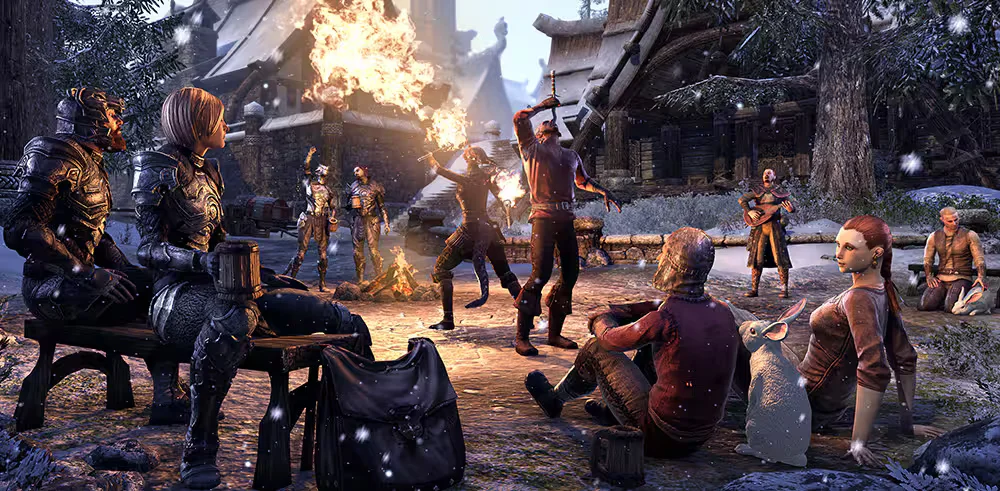
The continent of Tamriel is a benchmark for open-world design in gaming, rivalled by few in its sheer scope and detail. Divided into nine distinct provinces, from the snowy peaks of Skyrim to the swamps of Black Marsh, from the deserts of Hammerfell to the forests of Valenwood, it is a land of immense cultural and environmental diversity. Each province is home to a distinct race with its own history and culture: the Nords of Skyrim, the Dunmer (Dark Elves) of Morrowind, the Khajiit cat-people of Elsweyr, the Argonian lizard-folk of Black Marsh, and others. Over it all rules the almighty Empire, though its grip has weakened over the millennia.
The lore is incredibly detailed, often presented through in-game books that offer conflicting perspectives on history, making the world feel far more believable. Was Tiber Septim a hero who united the continent or a tyrant who conquered it? The answer depends on who you ask. The world also has a fascinating cosmology, with the Aedra and Daedra serving as gods and demons, the latter offering dark pacts to mortals through their Daedric artefacts. What makes Tamriel really special, though, is how it seems to offer endless possibilities. Want to explore far-flung ruins, delve into dark caverns, learn magic, become an assassin, or just get into a good old-fashioned brawl? In Tamriel, you can do, and be, just about whatever you like, forging your own path through a world that feels truly alive. Now, from a world of endless paths, let’s travel to a galaxy far, far away.
4. The Star Wars Galaxy
Star Wars

The Star Wars galaxy is the definitive “space fantasy,” a universe that feels both futuristic and ancient, where science-fiction classics such as spaceships, blasters, and droids merge with the mysticism and magic of the Force makes it one of the most versatile stories on this list. George Lucas brilliantly blended sci-fi elements with classic fantasy archetypes of knights, wizards, and princesses, all unified by the mysticism of the Force – an energy that binds the galaxy together and grants extraordinary powers to those sensitive to it. This unique fusion creates an elaborate and incredibly versatile setting, able to support everything from military sci-fi stories to tales delving into the magic and spiritual.
The galaxy’s stunning diversity of planets, species, and cultures has captivated audiences for decades. From the desert wastes of Tatooine to the city-planet of Coruscant, from the swamps of Dagobah to the forest moon of Endor, each location feels distinct and memorable. The Jedi Order and the Sith represent opposing philosophies about the Force, their conflict driving much of the galaxy’s history. The rise and fall of the Galactic Republic, the tyranny of the Empire, and the struggle of the Rebellion create a rich political backdrop. With its iconic characters, memorable quotes, and John Williams’ soaring score, the Star Wars galaxy has become one of the most recognisable and beloved universes in all of fiction, proving that sometimes the best fantasy worlds are found among the stars.
3. Westeros & Essos
A Song of Ice and Fire / Game of Thrones

George R.R. Martin’s world redefined fantasy for a generation, and HBO’s fantasy drama was a game-changer for the genre on screen. Westeros and Essos are gritty, believable continents where political intrigue, bloody battles, and brutal realism take centre stage, creating a world that feels historically grounded and utterly compelling. The world’s low-magic approach is its greatest strength; by making the fantastical rare and feared, elements like dragons and the White Walkers become all the more awesome and terrifying when they appear. This focus on human ambition and the complex power struggles between noble houses creates a world that feels less like fantasy and more like an alternate history.
Westeros itself is divided into seven kingdoms, each with distinct cultures, from the honour-bound North to the sun-drenched Dorne, from the wealthy Reach to the iron-forged islands of the Ironborn. The Wall, a massive fortification of ice stretching across the northern border, protects the realm from the threats beyond- both wildling raiders and the supernatural White Walkers. Across the Narrow Sea, the continent of Essos offers even more diversity, from the Free Cities with their merchant princes to the Dothraki Sea where horse lords roam, from the slaver cities of Slaver’s Bay to the mysterious lands of Asshai. The rare fantasy elements – the last dragons, the Children of the Forest, the ancient magic – are precious and intriguing precisely because they’re so uncommon. Martin’s meticulous worldbuilding, combined with his willingness to subvert fantasy tropes and kill beloved characters, created a world that feels dangerous, unpredictable, and utterly real.
2. The Wizarding World
Harry Potter

J.K. Rowling’s creation taps into a universal childhood fantasy: that a secret world of magic and adventure exists just beneath the surface of our own, waiting to be discovered. The world of Harry Potter is one of wonder and excitement, where wizards walk the halls, mythical creatures roam the forests, and the solution to our troubles is often just a wand tap away. The Wizarding World’s brilliance lies in its seamless integration with the mundane, hiding castles in the Scottish Highlands and magical ministries under London, accessible through a brick wall behind a pub or a telephone box that serves as an entrance.
At its heart is Hogwarts, perhaps the most beloved fictional school ever imagined, a place of wonder, friendship, and danger where young witches and wizards learn to harness their magical abilities. The castle itself is a character, with its moving staircases, talking portraits, and hidden passages. Beyond Hogwarts, the Wizarding World extends to Diagon Alley’s shops, the Ministry of Magic’s bureaucratic corridors, and locations across the globe. The magic system, whilst not as rigorously defined as some others on this list, has an intuitive charm – spells with Latin-derived names, potions brewed in cauldrons, magical creatures from folklore given new life. The films did an incredibly convincing job of bringing this world to life, from the grandeur of the Great Hall to the whimsy of Hogsmeade village, solidifying its place as a cultural phenomenon that invites us all to believe in magic. You’d have to be a Muggle to miss out.
1. Middle-earth
The Lord of the Rings
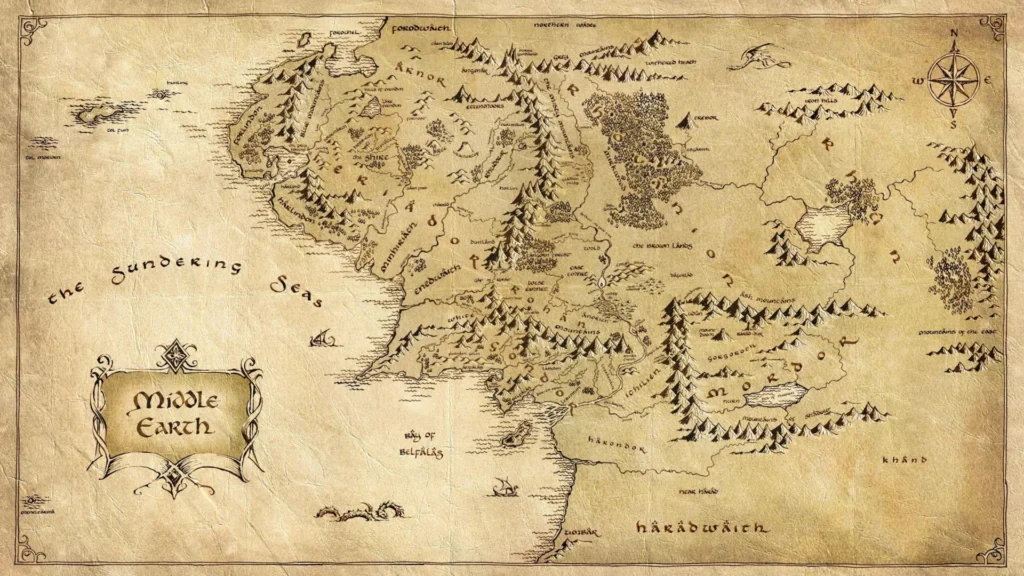
There can be only one precious. J.R.R. Tolkien’s Middle-earth is not just a setting; it is the undisputed pinnacle of worldbuilding, a new mythology for the modern age. Inspired by Germanic mythology and Old English literature, Tolkien sought to create a mythology for England, and in doing so, he crafted a world with a depth that remains unparalleled. He created entire languages – Quenya and Sindarin for the Elves, Khuzdul for the Dwarves and the Black Speech for Mordor, complete with their own grammar, vocabulary, and evolution over thousands of years. He wrote a history spanning ages, from the creation of the world in the Music of the Ainur to the departure of the Elves in the Fourth Age. He drew detailed maps, composed songs and poems, and traced lineages of kings stretching back millennia.
From the rolling hills of the Shire to the dark lands of Mordor, from the Elven realm of Rivendell to the Dwarven kingdom of Moria, Middle-earth is a world of poignant beauty and sorrow, a glorious, mythical past that set the standard for all epic fantasy to follow. It’s a world of brave and noble heroes, enigmatic wizards, glorious battles, and tales both inspiring and tragic. It is also one of poignant transition, as the time of Elves gives way to the time of Men, as magic fades from the world and the age of legend passes into history. Peter Jackson’s film trilogy brought this world to life with unprecedented fidelity, from the cosy hobbit-holes of Hobbiton to the towering city of Minas Tirith, from the golden hall of Rohan to the volcanic wasteland of Mount Doom.
Middle-earth evokes a sense of something lost, a glorious, mythical past that we wish was our present. It’s fantasy at its very best, a world that feels impossibly real, as if Tolkien didn’t invent it but merely translated ancient texts and maps he’d discovered. Its influence on the fantasy genre cannot be overstated; virtually every fantasy world that followed owes a debt to Middle-earth, whether in homage or reaction. It remains the gold standard against which all other fictional worlds are measured, the one ring to rule them all.
Honourable Mentions
Before we conclude, several worlds deserve recognition for their unique contributions to the landscape of fictional worldbuilding.
The Dreaming (The Sandman): A mesmerising realm that exists at the intersection of imagination and reality, where dreams take physical form and stories become living landscapes. Ruled by Morpheus, the personification of dreams, this ever-shifting universe is a kaleidoscopic reflection of human consciousness, where the boundaries between thought, myth, and existence blur into a breathtaking tapestry of infinite possibility.
Thedas (Dragon Age): A classic fantasy world distinguished by its unique magic system, where mages draw power from the Fade, a dangerous realm of spirits and dreams that’s closely connected to the subconscious. The tension between mages and templars, and the ever-present threat of demonic possession, creates a world where magic is both wondrous and terrifying.
Thra (The Dark Crystal): A one-of-a-kind world that feels both real and alien, brought to life through Jim Henson’s masterful and visually striking animatronic puppet designs based on Brian Froud’s concept art. The short-lived TV series Age of Resistance further built up Thra’s lore and history, making it a fascinating world that begs to be explored.
The Dark Souls Universe (Dark Souls): A deadly and intriguing land of fallen kingdoms and ancient lords, whose mysterious lore is pieced together through cryptic clues rather than direct exposition. Whereas many fantasy games are packed with detailed tomes and exposition, the Dark Souls games make you work for every scrap of lore, and that’s what makes this land so intriguing.


